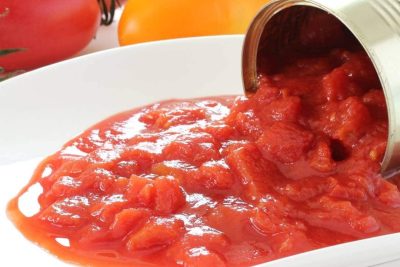
Alternative to Salt

Exploring Tasty Alternatives to Salt in Your Meals
Salt is the undisputed champion of flavor enhancement, but relying on it heavily can have downsides for our health, particularly concerning blood pressure and heart health. The good news? Cutting back on sodium doesn't mean resigning yourself to bland, unexciting food. Stepping away from the salt shaker actually opens the door to a vibrant world of other flavors waiting to elevate your dishes.
Exploring salt alternatives isn't about deprivation; it's about discovery. It challenges us to think beyond simple salinity and engage a wider spectrum of taste sensations: the brightness of acids, the earthy depth of herbs and spices, the savory richness of umami, and the subtle sweetness inherent in many vegetables. This journey promises more complex, interesting, and ultimately satisfying meals.
5 Flavor-Packed Salt Substitutes You'll Love
Ready to dive into some specific alternatives? Here are five powerhouses that deliver serious flavor without relying on sodium chloride:
- Citrus Zest & Juice (Lemon/Lime/Orange): Nothing cuts through richness and adds instant vibrancy like a squeeze of fresh citrus juice. The acidity brightens flavors, mimicking salt's ability to make other tastes pop. Zest adds intense aromatic oils – a sprinkle over finished dishes or into batters provides a fragrant punch. Use it in dressings, marinades, on roasted vegetables, fish, chicken, or even in grain salads.
- Vinegars (Balsamic, Apple Cider, Rice, Sherry): Like citrus, vinegars offer acidity but with unique flavor profiles. Balsamic brings sweet complexity, apple cider vinegar offers fruity tang, rice vinegar is delicate, and sherry vinegar is rich and nutty. A splash can balance richness, add brightness to soups and stews, and create incredible salad dressings. They make a fantastic finishing touch.
- Fresh & Dried Herbs (Basil, Oregano, Thyme, Rosemary, Cilantro, Dill): Herbs provide layers of aromatic flavor that salt simply can't replicate. Fresh herbs offer brightness and are best added towards the end of cooking. Dried herbs have concentrated flavors and are great for longer cooking times. Experiment with combinations – Italian herbs for tomato sauces, dill for fish, rosemary for roasted meats and potatoes, cilantro for Mexican and Asian dishes.
- Spices & Spice Blends (Black Pepper, Smoked Paprika, Cumin, Curry Powder, Garlic/Onion Powder): Spices add warmth, depth, heat, and complexity. Freshly cracked black pepper is a must. Smoked paprika lends a deep, almost meaty smokiness. Cumin is earthy and essential for chili and tacos. Curry powders offer pre-mixed complexity. Garlic and onion powder provide savory depth without the chopping. Toasting whole spices before grinding releases even more flavor.
- Umami Boosters (Nutritional Yeast, Mushrooms, Miso Paste): Umami is the savory "fifth taste," and boosting it satisfies cravings in a way similar to salt. Nutritional yeast has a cheesy, nutty flavor perfect for sprinkling on popcorn or pasta. Dried mushrooms (porcini, shiitake) or mushroom powder add deep, earthy savoriness to broths and sauces. Miso paste (use lower-sodium versions) brings fermented complexity to marinades, glazes, and soups.
Easy Ways to Boost Flavor Without Adding Salt
Beyond specific substitutes, simple cooking techniques can dramatically heighten flavor without reaching for the salt. Roasting vegetables like carrots, tomatoes, or garlic caramelizes their natural sugars, concentrating their inherent sweetness and depth. Searing meats creates a flavorful brown crust through the Maillard reaction, adding rich complexity that satisfies the palate.
Don't underestimate the power of aromatics like onions, garlic, shallots, celery, and carrots (mirepoix). Sautéing these gently in a little oil until soft and fragrant builds a foundational flavor layer for countless dishes, from soups and stews to sauces and stir-fries. Toasting spices and nuts before using them unlocks incredible depth and aroma that permeates the whole dish.
Why Your Taste Buds Will Thank You for Less Salt
Reducing your sodium intake isn't just good for your body; it's a gift to your taste buds. When we constantly overload our palate with salt, it becomes desensitized, requiring more and more to register the same level of flavor. Dialing back the salt allows your taste receptors to reset and regain their sensitivity.
This recalibration means you'll start appreciating the true flavors of food in a whole new way. The natural sweetness of vegetables, the subtle bitterness of greens, the bright acidity of tomatoes, and the complex notes of herbs and spices become much more pronounced and enjoyable. You'll discover nuances in your meals that were previously masked by salt, leading to a richer and more satisfying eating experience.
Transform Your Cooking with These Salt Alternatives
Embracing salt alternatives is less about restriction and more about unlocking a new dimension of culinary creativity. By incorporating vibrant acids, fragrant herbs, warming spices, and savory umami boosters, you move beyond one-dimensional salty flavor to create meals with incredible depth, balance, and complexity. It encourages you to become a more intuitive and adventurous cook.
Imagine roasted chicken bursting with lemon and rosemary, a vegetable stir-fry singing with ginger and rice vinegar, or a creamy soup deepened with smoked paprika and nutritional yeast. These alternatives don't just replace salt; they transform ordinary ingredients into exciting, restaurant-worthy dishes. Give your taste buds an adventure and discover how much more vibrant your cooking can be.






Leave a Reply